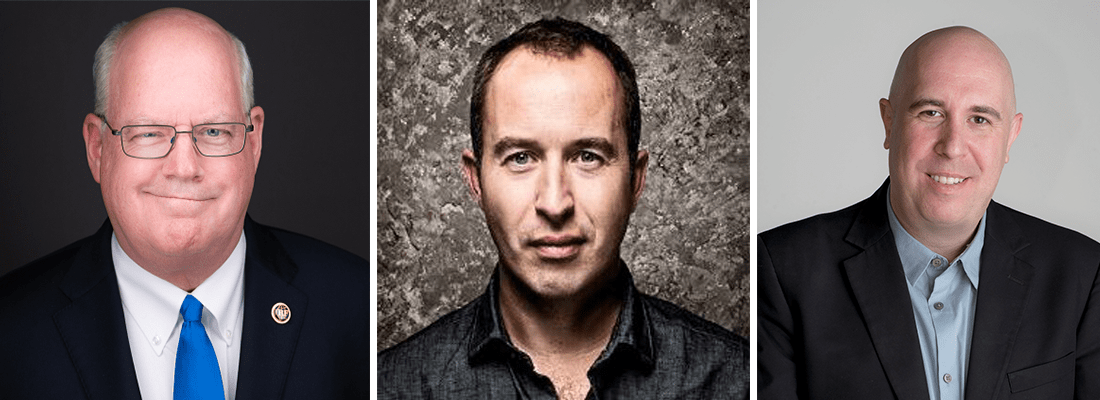Watch our webinar recording on smart technologies to improve road safety
ROAD SAFETY AND HOW TO MEASURE IT
Intertraffic’s August webinar focused on a topic that is close to everyone’s heart: safety, or more precisely, Smart Technologies to Improve Road Safety.
Smart technologies play a vital role in transforming and optimizing road safety. Intelligent traffic lights, advanced traffic control systems, artificial intelligence, telematics and automotive technology can contribute to prevent and reduce the number of road-related accidents and improve road safety. Mobile networks and fast data transmission solutions can be used to collect vehicle data and give valuable insights on traffic and road conditions, as well provide real-time weather information and warnings.
International Road Federation, Rijkswaterstraat and Foretellix shared their story
The three speakers, Dr Bill Sowell, founding chairman of the IRF ITS Committee, president of Argonaut Consulting, Serge van Dam - principal traffic management advisor at Rijkswaterstaat and Foretellix VP of business development, Roy Fridman, considered the use of innovative technologies to revitalize our infrastructure, modernize our transport system, inform road users as well as save lives and prevent crashes and also touched upon the impact of Covid-19 on the road safety sector.
text
1.3 million roadway fatalities globally in 2013, with over 40,000 of those in the US.
Dr Sowell highlighted some sobering statistics: 1.3 million roadway fatalities globally in 2013, with over 40,000 of those in the US. Traffic accidents are the number one cause of death among those aged 15-29 years with men accounting for three out of every four road death victims. Startlingly, low and middle-income countries have up to 90% of the world’s road traffic deaths. So, asked Dr Sowell, what can we do?What is clear is that the technology to vastly reduce these horrific numbers is out there and already deployed. A smart road is a safe road, and vice versa.
'The amount of traffic data now collected worldwide doubles every two years'
'There are more than 30 trillion sensors operational on our planet today, or 170 sensors for every man, woman and child. The amount of traffic data now collected worldwide doubles every two years,' he says. But one of main issues facing the road safety sector is that electronics have exceeded their design lifespan of between 10 and 15 years and vital portions of allocated ITS/CAV (connected and autonomous vehicle) funding has been diverted to COVID-19 mitigation so that outdated equipment is not being replaced.
Other challenges include a lack of the ubiquity in the global implementation of open communications protocol equipment specifications, a lack of public and private funding and hesitation by the global traffic engineering community to deploy CAV-enabled equipment.
To answer the question of what can we do, Sowell insists that one hugely important aspect is that all ITS stakeholders must be involved in the planning process and that the use of predictive traffic management, in particular the uptake of digital twin technology, is vital to the industry achieving its goals. 'Data on its own is useless without insight and analytics.'
Floating car data in the Netherlands.
Serge van Dam, principal advisor on traffic management at Rijkswaterstaat, has been working on a number of vehicle data projects with the express aim of making the Netherlands’ roads safer. With car manufacturers sharing first versions of their data in eight different categories, it’s up to the road authorities to interpret it correctly.
This, says van Dam, requires methods to standardize the message types of different car manufacturers, filter out incorrect and duplicate data, analyse level 2 data and re-interpret/transform data to level 3 events in order to obtain usable output for the road authorities. Using floating car data affords the authority a number of benefits that other data assets cannot, with one of the most important being the ability to assess the quality of the road surface. Damaged sections, potholes, raised drain covers and so on are reported in real time using FCD, all of which increases road safety as the authorities have the ability to widely share the ensuing warning message to drives far more quickly.
New event-driven data source
Other benefits of the new event-driven data-source, said van Dam, included “Hotspot detection, for example ABS activations within one month, in order to identify safety-critical surfaces or road layout; end-of-queue location by analysing and identifying a series of hard-braking events on highways; the detection of near-accidents in city centres by focusing on combinations of unusual event types within a small time frame; and, crucially, improving emergency services by providing notifications earlier than the current non-automated system.
Floating car data fed into VMS is so much quicker and more reliable than data collected from in-surface loops and van Dam expects the next exponential benefit to be found in the data collected from connected and autonomous vehicles which provide a greater, as-yet-unseen level of insight.
Intelligent automation and analytic tools to orchestrate and monitor hundreds of millions of driving scenarios including edge cases.
Israel-based Foretellix tackles the most challenging barrier to autonomous vehicle deployment, namely the measurability of safety. The company develops intelligent automation and analytic tools to orchestrate and monitor hundreds of millions of driving scenarios including edge cases, allowing for the broad deployment of ADAS and autonomous vehicles and to unleash the full potential of the autonomous revolution.
Roy Fridman, vice president business development, explained the theory behind the company’s “measurable safety” epithet, and how Foretellix has approached the subject from a unique angle, having originated in the semiconductor sector.
Foretellix is seeking to address the burning issue that has seen thought leaders and executives within the automotive industry share their concerns about the validity of miles tested and disengagements as metrics for the safe deployment of autonomous vehicles, and some have started proposing alternative metrics.
'Use of partially automated driving systems be limited after tests showed they do not always work accurately.'
Citing examples of the June 2020 accident involving a Tesla Model 3 on Autopilot that did not recognise an overturned truck, and the earlier recall by Volvo of over 750,000 cars with concerns over the reliability of the autonomous emergency braking system, Fridman quoted the AAA’s recommendation that the “use of partially automated driving systems be limited after tests showed they do not always work accurately.” If the inference is that automated systems are not safe enough, it’s up to companies such as Foretellix to disrupt the industry and address the problem with cutting-edge, provable solutions.
One such solution is the company’s Foretify verification system which features a high level Measurable Scenario Description Language (M-SDL) used to describe both scenarios and coverage goals to enable a ‘measurable safety’ ecosystem; automation to generate combinations of combinations of scenario variants along with monitors to check and track scenario coverage, together with the ability to aggregate coverage data from the execution across all testing platforms and scenarios (test vehicles, test tracks, simulation, X-in-the-loop) and extract analytics and metrics for developers to know where they are, what to do next and when they’re done.
Join us again on September 29 when the subject will be connected road users’ need for connected road networks.
Upcoming webinars
29 SEPConnected road users need connected road networks
27 OCTParking as integral part of the seamless travelling experience
24 NOVThe path to autonomous driving
15 DECDigital infastructure to cater for more data flowsFor more information go to www.intertraffic.com/webinars
Share your story
Do you have an innovation, research results or an other interesting topic you would like to share with the professionals in the infrastructure, traffic management, safety, smart mobility and parking industry? The Intertraffic website and social media channels are a great platform to showcase your stories!
Please contact our Sr Brand Marketing Manager Carola Jansen-Young.
Are you an Intertraffic exhibitor?
Make sure you add your latest press releases to your Company Profile in the Exhibitor Portal for free exposure.
Get up to speed on the mobility industry - our newsletter straight to your inbox!



